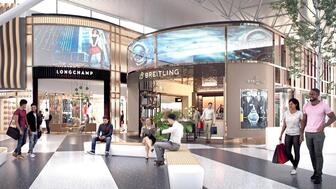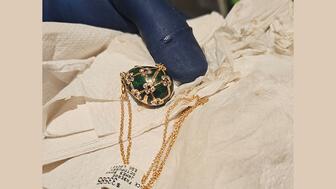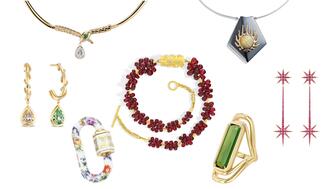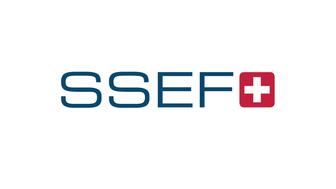A Recession Is Unlikely, Says NRF Economist
The economy is moving from “extremely strong” to “moderate” growth, said NRF Chief Economist Jack Kleinhenz.

The organization’s head economist gave an overview of the current economic situation, as well as his predictions for the next few years ahead, in the NRF’s latest Monthly Economic Review.
The United States is facing its highest inflation rates in 40 years, he noted, prompting the Federal Reserve to raise the benchmark federal funds interest rate by three-quarters of a percentage point, the largest increase since 1994.
To fight inflation, Kleinhenz explained, the Fed has to slow demand, and to do that, it has to be more expensive for consumers and businesses to borrow money.
“The Fed increases will mean higher interest rates and higher monthly payments on home mortgages, car loans and credit card bills for consumers while businesses will see higher costs for corporate borrowing and the government will pay more on the $23.9 trillion in debt held by the public,” he wrote.
The Fed’s latest forecast pegs the benchmark federal funds rate at 3.4 percent by the end of 2022 and 3.8 percent by the end of 2023.
Raising the interest rate, he said, weighs down stock and bond returns and impacts consumer confidence.
The Federal Reserve Bank of New York’s Survey of Consumer Expectations said households expect inflation to rise 7 percent over the next year, but only 4 percent over the next three years.
To add to the situation, the war in Ukraine has not only led to geopolitical strife but also driven up energy prices and exacerbated supply chain issues.
Yet, despite these myriad economic and political issues, economic data is still signaling solid growth ahead, Kleinhenz said.
Consumer spending has remained resilient in the face of inflation.
The NRF calculates retail spending, narrowing in on core retail by excluding automobile dealers, gas stations and restaurants.
Its data shows retail spending in May was unchanged month-over-month and up nearly 7 percent year-over-year.
For the first five months of 2022, retail sales were up more than 7 percent compared with the same period in 2021.
As COVID-19 restrictions ease, households are expected to adjust their spending and shopping habits, said Kleinhenz.
Overall household spending, other than retail sales, is expected to climb 9 percent to a new high next year.
Spending on services and travel is also expected to rise.
Restaurant sales, which Kleinhenz said act as a proxy for broader services, posted month-over-month growth of nearly 1 percent and year-over-year growth of 18 percent in May.
The Transportation Security Administration is shuffling an increased number of travelers through security, with passenger volume close to pre-pandemic levels.
More than 40.3 million travelers passed through airport checkpoints between June 1 and June 17, only 13 percent below the same period in 2019.
Manufacturing activity also rose in May, Kleinhenz noted.
Supplier deliveries improved alongside “decent” demand and orders, while order backlogs grew at a faster pace, according to the monthly report on business from the Institute for Supply Management.
The job market also remained steady.
“None of us can say with any assurance what the future holds, but policy actions will likely be the deciding factor shaping the economic outlook this year and next.”—NRF Chief Economist Jack Kleinhenz
“Job openings and quit rates through the end of April suggest the job market remains tight, payroll growth remains sturdy even though it slowed in May, and the unemployment rate has been steady at 3.6 percent for three months in a row,” said Kleinhenz.
The current period of economic expansion is more than two years old, he said, meaning it has lasted longer than the two-month recession that ended in April 2020.
“I am not betting on an official recession in the near term, but the most recent research pegs the risk over the next year at about one in three and it will be touch and go in 2023,”said Kleinhenz.
While he does not believe a recession necessarily is coming, a contracting economy is still possible.
The consumer outlook over the next few months is favorable, he said, as most U.S. households continue to have high levels of purchasing power.
“The economy is moving away from extremely strong growth toward moderate growth, but increased income from employment gains, rising wages and more hours worked is expected to support household spending,” he said.
A recent report from Fruchtman Marketing forecasts 2022 jewelry sales will take a similar path of moderate growth compared with the period of strong growth last year.
“None of us can see around corners or say with any assurance what the future holds, but policy actions will likely be the deciding factor shaping the economic outlook this year and next,” Kleinhenz said.
To read the full economic review for July, visit the NRF website.
The Latest

The couple pleaded guilty to concealing at least $127 million in cash transactions at its precious metals businesses.

In February 2026, the auction house will move its headquarters to the former Steinway Hall, a neoclassical landmark on Billionaires’ Row.

The new show will take place Jan. 23-25, 2026.

How Jewelers of America’s 20 Under 40 are leading to ensure a brighter future for the jewelry industry.

The former BHP Billiton leader and Gemfields chairman is remembered for his influential leadership throughout his 50-year mining career.


The LVMH-owned brand has partnered with the costume design union to revamp its award for 2026.

The luxury titan inked a deal to acquire an initial minority stake in the jewelry manufacturer with a pathway to full ownership by 2032.

Roseco’s 704-page catalog showcases new lab-grown diamonds, findings, tools & more—available in print or interactive digital editions.

The company’s curation of unsigned vintage and estate jewelry debuted at the Bloomingdale’s in Costa Mesa, California.

In the recent multi-shipment seizure, CBP also found counterfeit Audemars Piguet, Moncler, and Chrome Hearts items.

Helzberg’s Chief Retail Officer Mitch Maggart shared details about its tests of a new store concept rooted in an elevated luxury experience.

Jewelers of America execs and National Jeweler editors discuss tariffs, the sky-high gold price, and the engagement that broke the internet.

The luxury goods company said founder Ippolita Rostagno will remain at the brand’s helm.

Laura Burdese, who joined the Italian luxury brand in 2022, will take on the role in July.

The National Jeweler editors revisit the most noteworthy industry happenings and design trends from 2025.

Need a gift for the cat lover who has everything? Look no further than our latest Piece of the Week.

It purchased the “Grosse Pièce,” an ultra-complicated Audemars Piguet pocket watch from the ‘20s, for a record-breaking price at Sotheby’s.

The lab-grown diamond grower now offers custom engagement and fashion jewelry through its Kira Custom Lab Jewelry service.

Chandler got his start at Michelson Jewelers and has served as DCA president and CEO since 2001. He will retire at the end of the month.

The boutique is slated to open this week inside Terminal 8, offering pre-owned Rolex watches and more to international travelers.

Sponsored by Digital Monitoring Products

The special-edition egg pendant ingested in a New Zealand jewelry store was recovered after a six-day wait.

Associate Editor Natalie Francisco plays favorites with Piece of the Week, selecting a standout piece of jewelry from each month of 2025.

The “Love and Desire” campaign is inspired by the magic that follows when one’s heart leads the way, said the brand.

Two awardees will receive free tuition for an educational course at the Swiss lab, with flights and lodging included.

Berta de Pablos-Barbier will replace Alexander Lacik at the start of January, two months earlier than expected.

Sotheby’s held its first two jewelry sales at the Breuer building last week, and they totaled nearly $44 million.



























